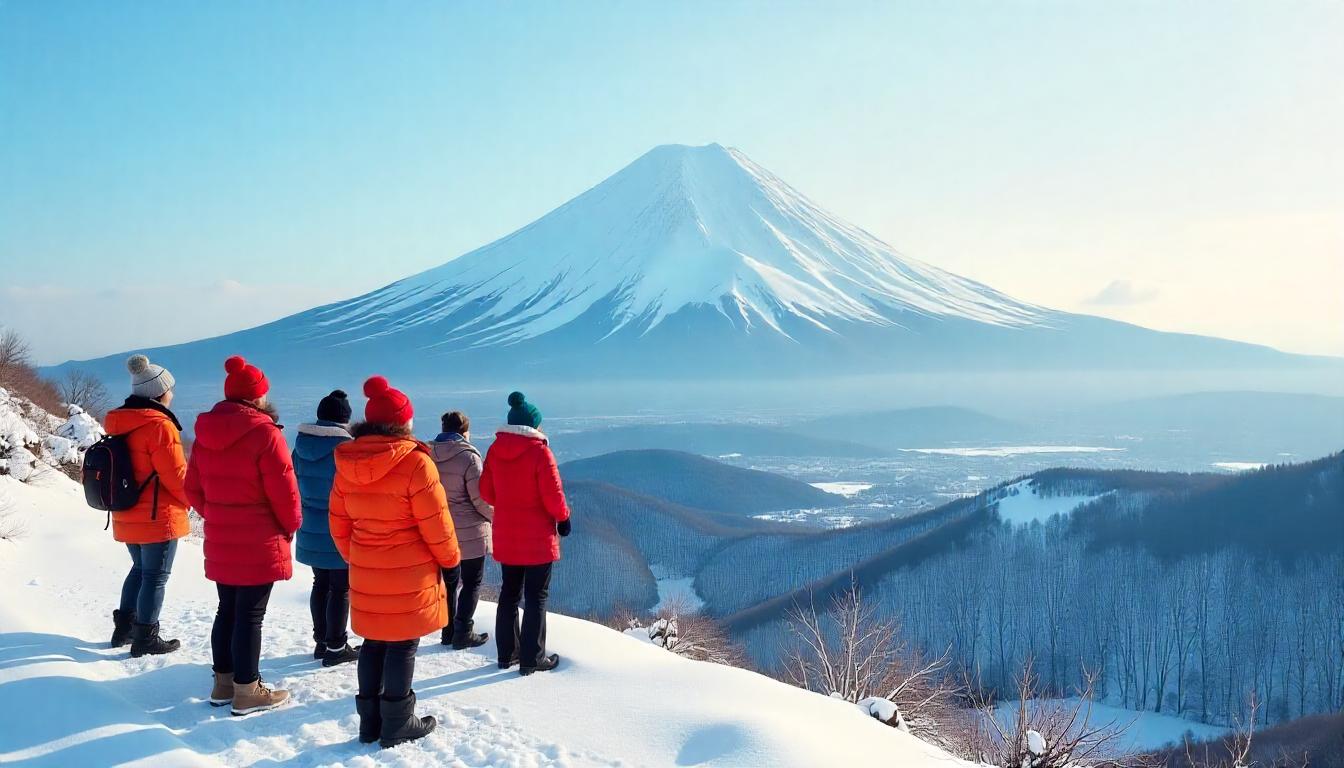≡-Japan Travel Sector, Already Reeling from Earthquake Prophecy, Faces Fresh Blow as New Storm Nari Causes More Than 1090 Flights Disruption Amid Rising Tourist Taxes, Dual Pricing, and Overtourism Controls – Viral of Today
<> Viral of Today <>
Home » Japan Travel News » Japan Travel Sector, Already Reeling from Earthquake Prophecy, Faces Fresh Blow as New Storm Nari Causes More Than 1090 Flights Disruption Amid Rising Tourist Taxes, Dual Pricing, and Overtourism Controls Wednesday, July 16, 2025Japan Travel Industry, Which Has Already Been Shaken Up Over Earthquake Prophecy, Registers Further Setback as Fresh Storm Nari Brings Over 1,090 Flight Disruptions as Rising Tourist Levy, Dual Pricing, and Overtourism Restrictions—triggering a triple threat of crises in Japan’s tourism sector. Massive disruptions resulting from severe weather related to powerful weather systems of mighty Storm Nari’s powerful weather systems triggered cancellations and delays at among Japan’s busiest airports, including Haneda, Narita, Fukuoka, New Chitose, and Miyazaki. Adding insult to injury, sensational earthquake prophecy has already shaken up travelers, significantly reducing oversea visitor confidence and prompting some carriers, such as Hong Kong Airlines, to cancel routes due lack of demand. Adding further visitor discomfort, Japanese authorities recently implemented raised departure as well as accommodation levies, controversial dual rate plans intended specifically at oversea travelers, and bolstered overtourism regulation policies such as visitor caps as well as tougher crowds measures in destination hotspots. Individually, they pose stiff challenges; collectively, they pose unprecedented challenges in Japan’s travel industry as well as accommodation sector as they test them in unprecedented ways.Severe Flight Disruptions due to Storm NariStorm Nari moved across Japan, causing widespread travel disruption in its wake. In the past 24 hours alone, a combined 1,090 flights have been subjected to severe disruptions, with 1,054 being delayed and 46 being flat out cancelled, causing chaos at major airports throughout the nation. Amongst affected airports most severely were Tokyo International Airport (Haneda), with 497 delays and 13 cancellations, Fukuoka Airport with 233 delays and 9 cancellations, New Chitose Airport with 113 delays and 7 cancellations, Miyazaki Airport with 50 delays and 9 cancellations, and Narita International Airport with 161 delays and 8 cancellations.Leading airlines, including Japan Airlines, All Nippon Airways, Jetstar Japan, and ANA Wings, faced severe impacts, as passengers confronted cancellations and long delays. Major international carriers operating to and from Japan, including United Airlines, China Airlines, EVA Air, Lufthansa, Finnair, and Korean Air, also reported disrupted flights, compounding international travel chaos.Passengers in these airports have reported confusion, difficulties, and long delay with many of them being stranded overnight or altering flight itineraries altogether due to widespread disruption inflicted by Storm Nari.Earthquake Prophecy Leaves Tourism Already VulnerableEven before Storm Nari’s destructive winds and rains, Japan’s travel sector was already weakened due to widespread anxiety caused by an earthquake prophecy. Inspired by manga artist Ryo Tatsuki’s graphic novel, “The Future that I Saw,” a vivid prediction—claiming a significant earthquake would devastate Japan in July 2025—spread across social media, creating a wave of viral panic.This prediction caused panic among both local and foreign travelers, resulting in a significant decline in tourism arrivals, particularly in regions such as Hong Kong, as fear of earthquake catastrophe had substantially lowered travel demand. Hong Kong Airlines suspended flights due to low demand caused by such fears, temporarily halting flights to Japan’s Kumamoto and Kagoshima prefectures, further cutting essential tourism income.Even though actual quake occurrences have mostly stayed in Japan’s distant Tokara Islands—more than 2,000 earthquakes documented since late June, with some notable occurrences with intensity levels of up to “lower 6″—the psychological effect on tourists has already caused severe financial losses in Japan’s tourism-reliant regions.Japan Introduces Rising Tourist Taxes and FeesAmongst these environmental and psychological issues, Japan’s administration keeps in place strict economic policies directed at tourists. Japan’s airport departure tax, originally at ¥1,000 per outbound international passenger, is subject to proposals, with possible increases as high as ¥3,000–¥5,000 as of fiscal year 2025. All raised revenues—a possible ¥49 billion—the administration aims at using in counterbalancing overtourism concerns, enhancing infrastructure, as well as strengthening crisis response capacities.Adding further strain on tourists, Japan just signed off on further accommodation taxes in 11 of its most bustling traveler districts, such as Kyoto, Osaka, Otaru, and Okinawa. Overnight travelers now have to pay ¥100 to ¥500 per night, with Kyoto authorities even setting plans for further hikes of up to ¥10,000 per night at peak tourism seasons.Furthermore, as of November 2026, Japan will end its long-lasting immediate consumption tax exemption regime for foreign tourists, in place of a pay-upfront-and-refund-upon-departure arrangement in order to prevent rampant exploitation of tax-free shopping. Such a change in tax policy is likely to have a huge impact on visitor expenditure behavior as well as tourism income in general.Implementation of Controversial Dual Pricing for TouristsFurther muddling the tourism industry, Japan is set to adopt a dual-pricing policy as of July 2025. This controversial policy will have differential prices in major attractions, mass transit, and other prime attractions, with non-residents paying higher charges than locals.Pilot projects in leading attractions such as Mount Fuji, Kyoto, Niseko, and Okinawa seek to regulate numbers of visitors as means of stemming negative effects of overtourism. Whereas some policymakers view such action as necessary in balancing infrastructure pressure, most of those visiting as well as tourism sector players have decried dual pricing as being discriminatory as well as capable of hurting Japan’s global image.Intensifying Measures Against OvertourismJapan’s proactive overtourism regulations persist in response to overcrowding, environmental degradation, and stressed local infrastructure. Mount Fuji now officially limits climbers daily to 4,000 with a price of ¥2,000 per visitor to fund conservation and upkeep initiatives. In busy districts such as Tokyo’s Shibuya, alcohol is prohibited at large events with strict regulations on crowd control and deployment of guards to uphold order.At the same time, Japan’s older cities, like Kyoto, suffer under unbearable strain caused by unprecedented tourism volumes, with extreme transport gridlock, waste issues, and manpower shortages. In response, authorities implement car restrictions, educational campaigns targeting tourists, as well as increased levies designed to curb visitor increases and redistribute tourists towards less frequented areas.Sharp Tourism Decline Amid Earthquake ProphecyDespite healthy general tourism activity, Japan’s travel sector was afflicted with a massive slowdown due to mass panic over a forecast of an earthquake. Spurred on by a go-viral manga prophecy of a devastating quake in the summer of 2025, panic rapidly swept across Asia, leading to a measurable fall in arrivals out of core markets.Hong Kong saw the greatest impact, with visitor arrivals in May 2025 slipping by 11.2% year-on-year, reaching just 193,100 tourists. Seasonal reservations in key East Asian markets including Hong Kong, Taiwan, South Korea, and China dropped significantly by up to 50%. Season-of-the-year reservations in peak summer periods did worse, crashing as low as 83%. Even traditional tropical sources of tourism revenues in Southeast Asia reported declines of roughly 30% as concerns mounted.The financial cost of this slowdown in tourism is considerable, with Nomura Research Institute putting losses as high as ¥560 billion (some US $3.9 billion). It is a testament to how powerful traveler sentiment, no matter how founded in unsubstantiated rumor, can be in influencing tourism patterns.Japan’s tourism office is now confronted with both the challenge of making reassurances with fears continuing while in the meantime dealing with long-term implications of this unprecedented prophecy-led downturn.Tokyo International Airport (Haneda)Total disruptions: 510 flightsDelays: 497 flightsCancellations: 13 flightsAirlines most impacted:ANA Wings: 48 delays, 6 cancellationsJapan Airlines: 183 delays, 4 cancellationsStarFlyer: 25 delays, 2 cancellationsAll Nippon Airways: 141 delays, 1 cancellationUnited Airlines: 5 delays (41%)Fukuoka AirportTotal disruptions: 242 flightsDelays: 233 flightsCancellations: 9 flightsAirlines most impacted:Japan Airlines: 48 delays, 3 cancellationsANA Wings: 23 delaysAll Nippon Airways: 25 delaysJetstar Japan: 16 delays (64%)Oriental Air Bridge: 20 delays, 4 cancellations (8% cancellation rate)New Chitose AirportTotal disruptions: 120 flightsDelays: 113 flightsCancellations: 7 flightsAirlines most impacted:Japan Airlines: 23 delaysAir Do: 15 delaysAll Nippon Airways: 15 delaysPeach Aviation: 12 delaysJetstar Japan: 10 delays, 3 cancellations (13% cancellation rate)Miyazaki AirportTotal disruptions: 59 flightsDelays: 50 flightsCancellations: 9 flightsAirlines most impacted:Japan Airlines: 14 delays, 3 cancellations (8% cancellation rate)ANA Wings: 8 delays, 2 cancellationsOriental Air Bridge: 9 delays, 4 cancellations (16% cancellation rate)Solaseed: 12 delaysNarita International AirportTotal disruptions: 169 flightsDelays: 161 flightsCancellations: 8 flightsAirlines most impacted:Japan Airlines: 21 delaysJetstar Japan: 32 delays, 4 cancellations (5% cancellation rate)United Airlines: 5 delays, 3 cancellations (12% cancellation rate)Peach Aviation: 7 delaysEVA Air: 5 delaysCombined Total Disruptions Across Airports:Total Flights Delayed: 1,054 flightsTotal Flights Cancelled: 46 flightsOverall Flight Disruptions: 1,100 flightsThese precise airport-specific details clearly outline the scale and scope of disruption due to Storm Nari, providing a comprehensive overview aligned with your headline and introduction.Japan’s tourism industry, already buffeted by worries stemming from a widely published earthquake prediction, is further rocked as New Storm Nari is responsible for over 1,090 flight disruptions, in addition to pressures caused by recently levied tourism taxes, contentious dual pricing, and stricter overtourism measures. These concurrent crises threaten to push Japan’s tourism sector past the breaking point.Japan Navigates Several Tourism CrisesWith a difficult pairing of natural calamities, psycho-anxieties, and contentious policy shifts, Japan’s tourism industry is experiencing one of its most difficult times in recent history. As flight schedules take a dramatic hit due to continuing Storm Nari, earthquake phobias, as well as new tourism levies, dual rates, and overtourism measures, all contribute to mounting levels of uncertainty around travel in Japan. Japan’s tourism sector will face acute pressure as authorities compete with finding a balance between maintaining local environments and communities with maintaining the necessary economic benefits of tourism. Successive months will determine whether such efforts realize sustainable tourism, or otherwise create further confusion among tourists as well as financial losses.
This information will surprise you!
See also
- Read until the end to discover everything.
- Important information you need to know.
- Interesting facts and helpful tips.
Conclusion
Did you enjoy the news? Keep following us daily!













